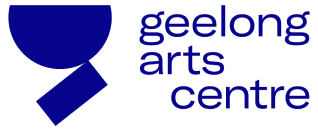We used the three features of the Building as a Living Organism to respond to our findings through three projects: Breaking the 4th Wall (meaningful interaction); Time Travel (memory); and Sensory Interaction (sensing). These projects include specific use cases which build upon the key findings of Workshops 1 & 2. These use cases were evaluated and discussed in Workshop 3.
Breaking the 4th Wall
Breaking the 4th Wall comprises digital interventions that seek to break down the ‘fourth wall’: the imaginary separation between performances and their audience. In this project, we treat the collective activity of the Arts Centre’s Ryrie St building as the performance so we look to overcome the building walls, the building floors, and the distances that separate audiences from performers and Arts Centre staff. We propose three use cases (shown here) to bring this project to life: Talking Screens; See-Through Walls; and GAC Spatial.
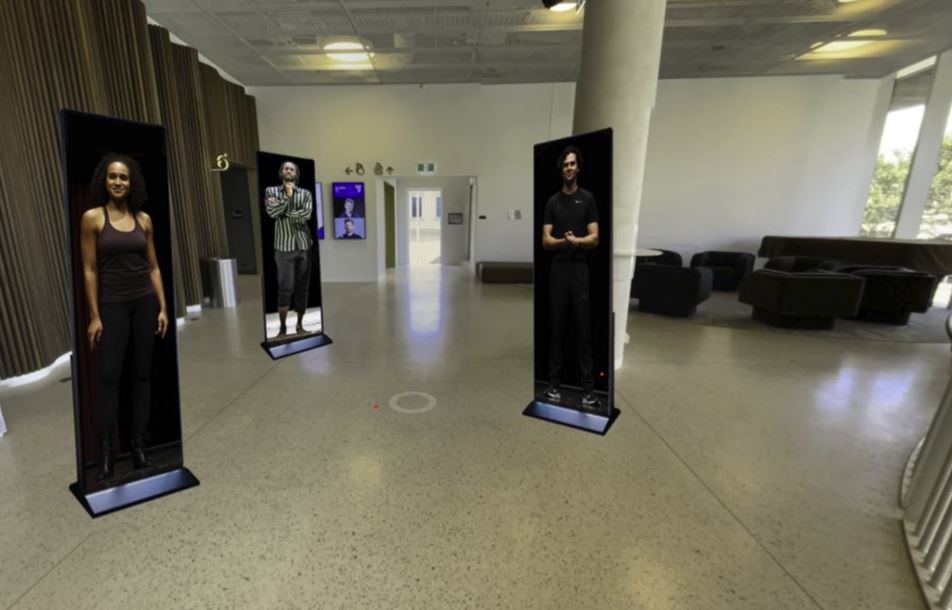
TALKING SCREENS
Talking Screens involves screen-based activation of the Arts Centre’s foyer space. The screens feature digital conversation partners with whom audiences can speak. Conversation partners include performers, occupants of the building’s creative co-working spaces, and Arts Centre staff. StoryFile is an example of a technology that could support this experience.
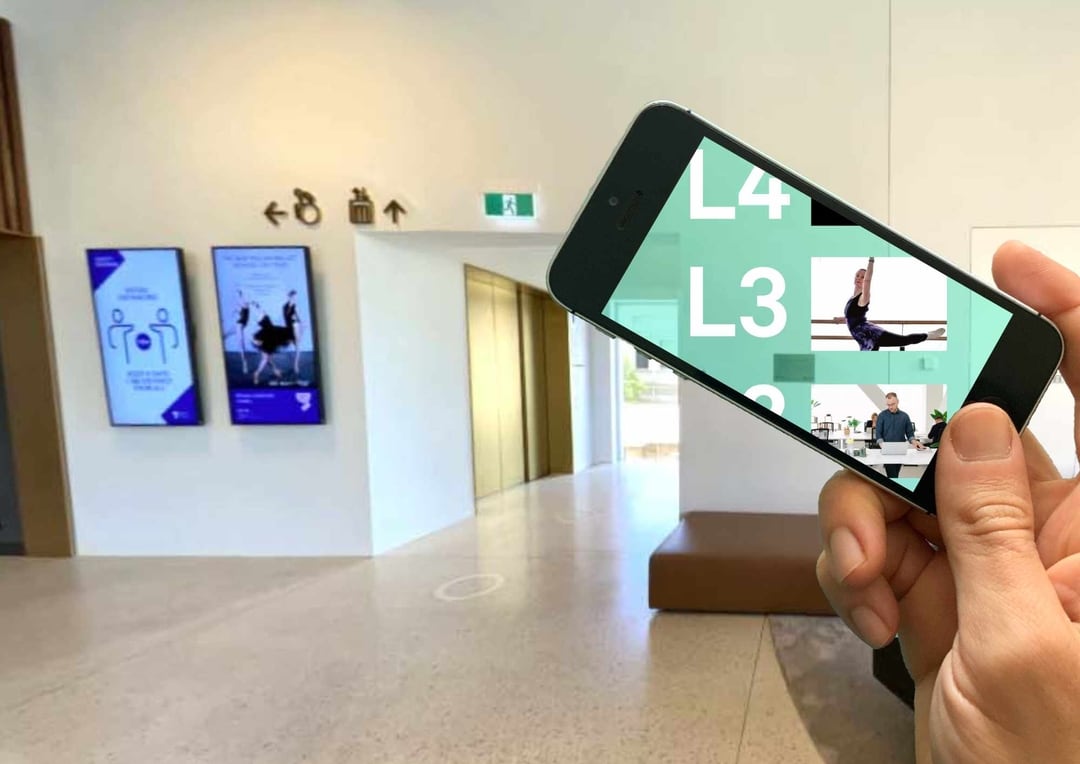

SEE-THROUGH WALLS
See-through Walls is an augmented reality (AR) application which acts as a 3D map and reveals the various activities on at the Arts Centre. See-Through Walls also helps visitors navigate content relating to specific spaces, such as performance previews or recordings. Emerging technologies, such as ARConnect (PHORIA) and WebAR (8th Wall), could support this experience.
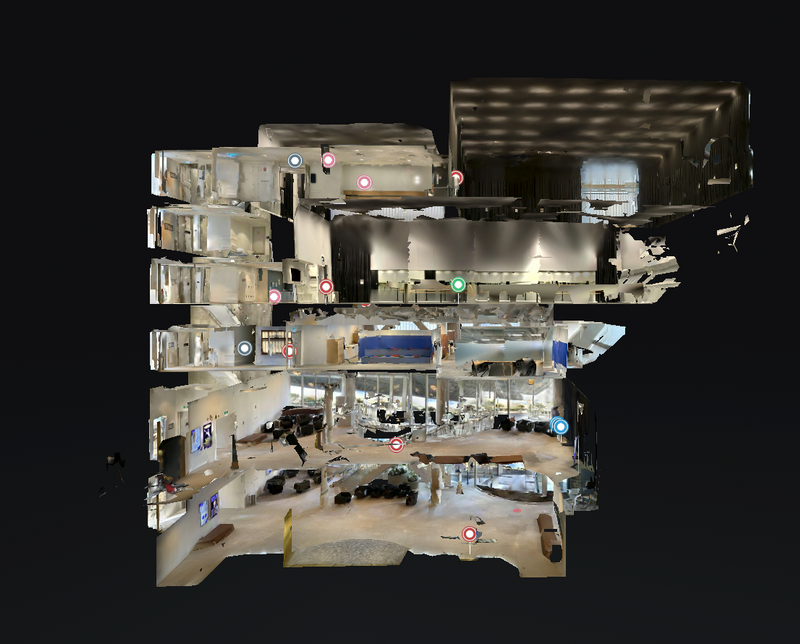

GAC SPATIALS
GAC Spatial offers a 3D and 360° panoramic image capture of the Arts Centre Ryrie St building. This technology allows visitors and staff to use personal screen-based devices to navigate a virtual copy of the building and access information about the building spaces, such as room details and usage instructions.
TIME TRAVEL
Time Travel extends Breaking the 4th Wall experiences by presenting users with historical insights, information about shows, and spatial analysis. We propose three use cases (shown here) to bring this project to life: Virtual Windows; Sliding through Time; and GAC Spatial Movement Analysis.
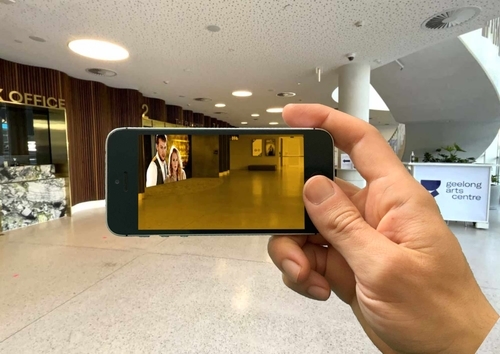
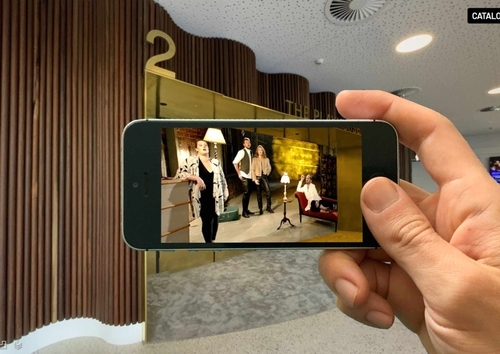
VIRTUAL WINDOWS
Virtual Windows builds on the See-Through Walls experience by giving viewers opportunities to experience moments in time of Arts Centre spaces such as past performances, recordings of performers or activities such as rehearsals.
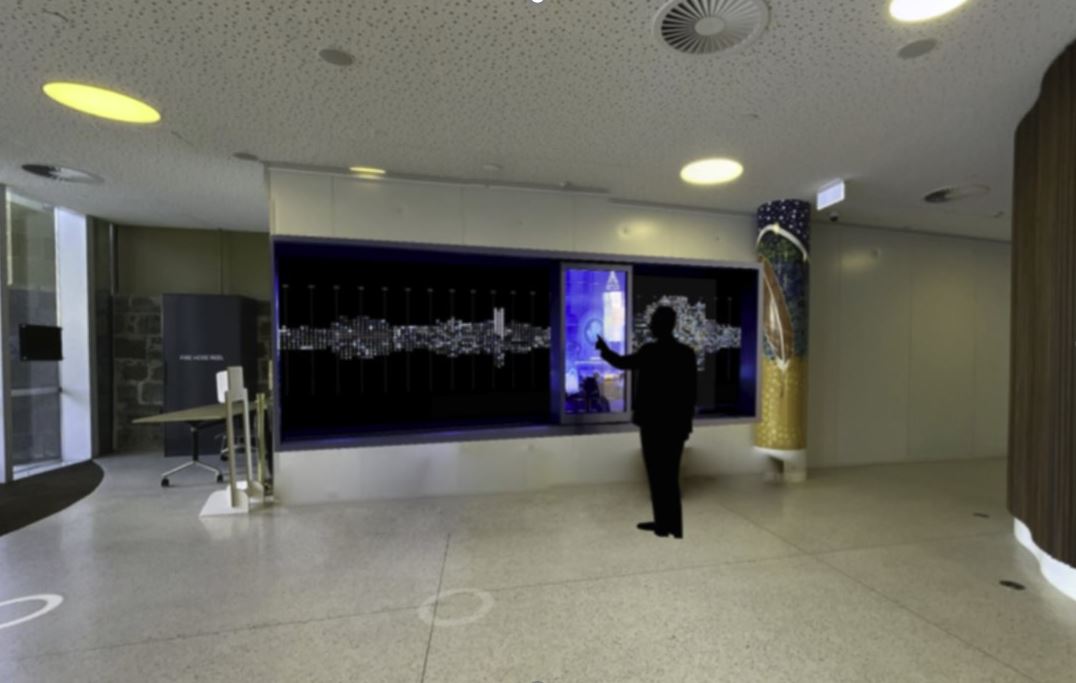
SLIDING THROUGH TIME
Sliding through Time employs a Sliding X-Ray Screen, which allows users to physically navigate Arts Centre information on a communal display. The technology can be used to demonstrate information to school groups or give audiences/visitors access to information and entertainment.
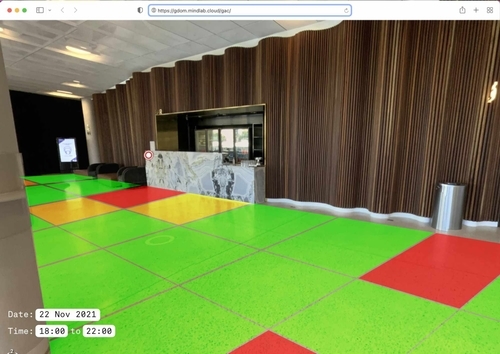
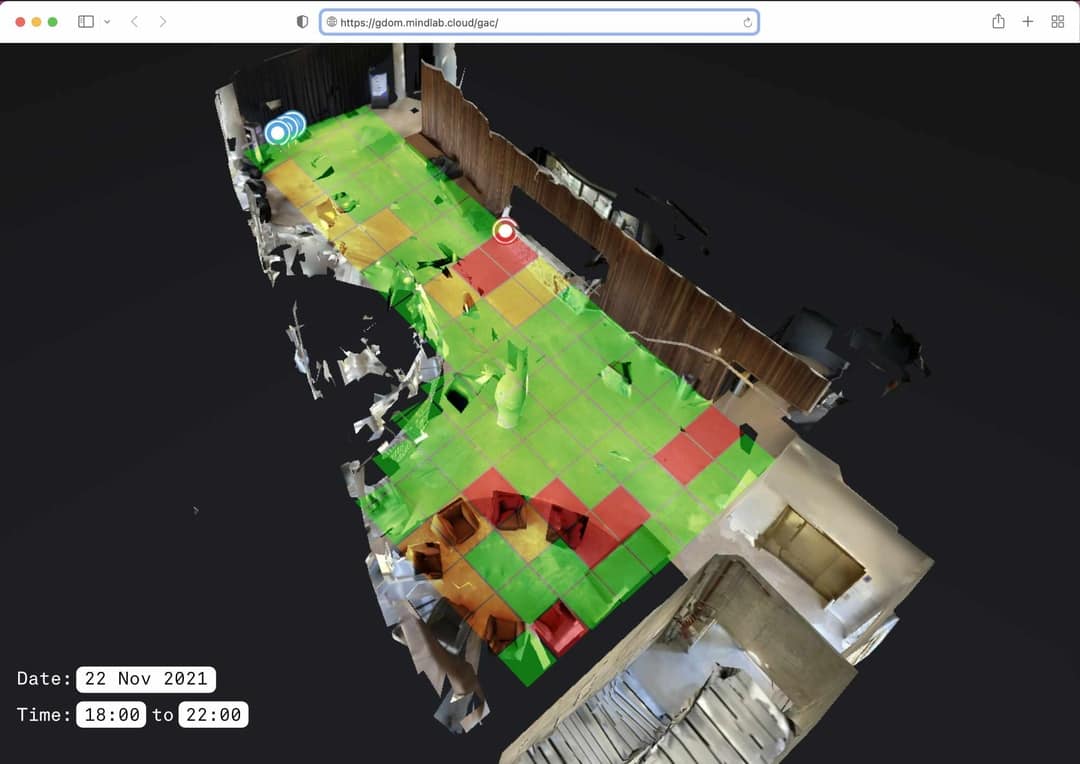
GAC SPATIAL MOVEMENT ANALYSIS
GAC Spatial Movement Analysis is a concept for using GAC Spatial to provide insights over specific time periods into issues such as visitor crowding. These insights are visually mapped to a 3D scan of the physical space to make it easy to identify areas of the building that need improvement for the flow of visitors.
Sensory Interaction
Sensory Interaction presents digital interventions that focus on sensing audience movements, behaviours, and sentiments, and, in return, engaging their senses. We propose four use cases (shown here) to bring this project to life: See-through inside/outside; Sentiment Capture; Sentiment Projection; and Redirection through Activation.
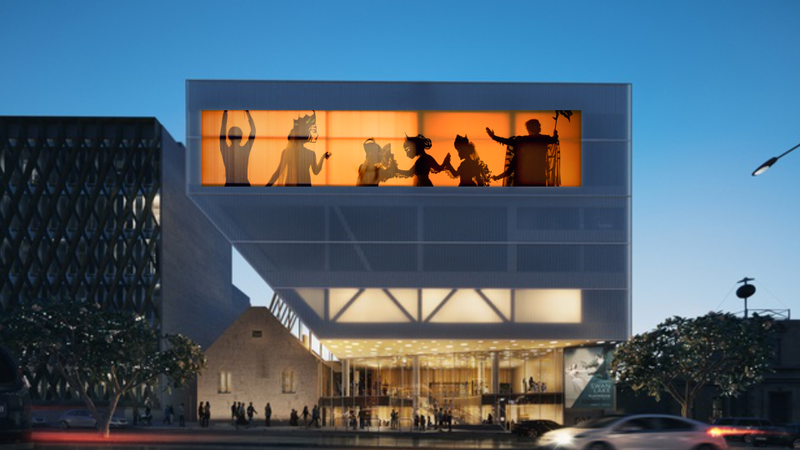
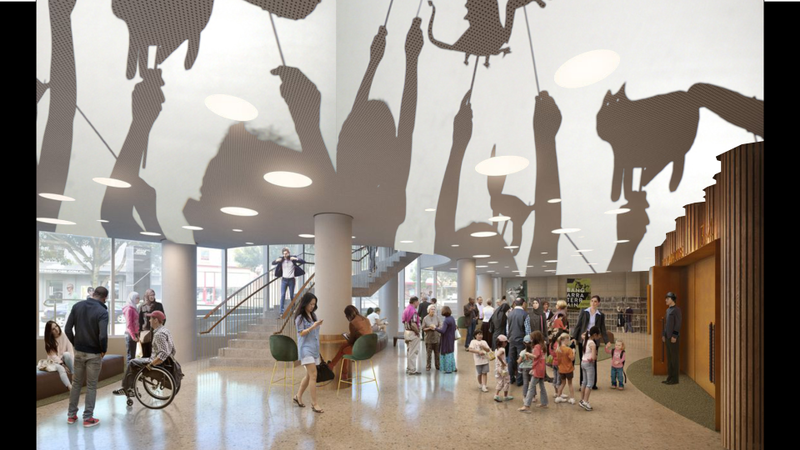
SEE-THROUGH INSIDE/OUTSIDE
See-through inside/outside seeks to dissolve physical and social boundaries by using a combination of indoor and outdoor projections of footage of audiences and performers. Outdoor projections of performers can give the public and prospective visitors an idea of what’s happening inside the Arts Centre. Indoor projections that provide shared activities can encourage visitors to play and engage with one another.
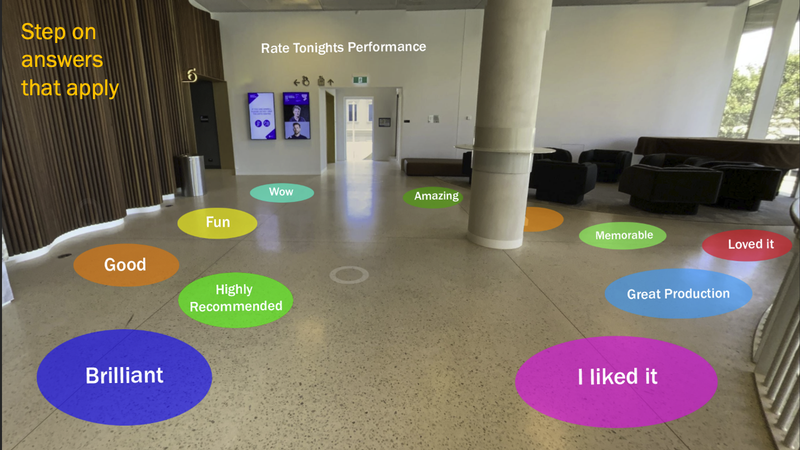
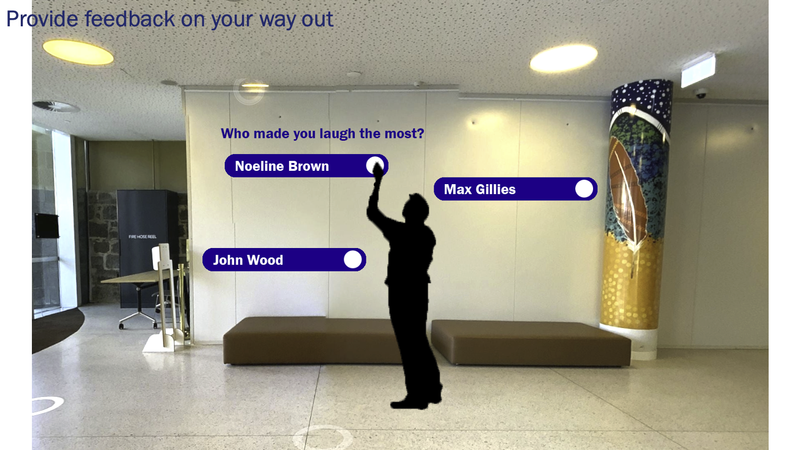
SEE-THROUGH INSIDE/OUTSIDE
Sentiment Capture offers a more playful and communal/social way for audiences to express their sentiments in response to questions posed by the Arts Centre, such as how they feel about a performance. Sentiment Capture provides an entertaining alternative to filling in conventional surveys. Technologies that can be leveraged to deliver this experience include AR projection, and spatial interaction with smart sensing.
SENTIMENT PROJECTION
Sentiment Projection projects a symbolic representation of an audience’s emotional reactions to a performance (e.g., applause, laughter, gasps) on the Arts Centre building surfaces. The projection acts as a kind of emotional thermostat, giving visitors and the public a sense of what’s happening in the Arts Centre at an emotional level to inspire their curiosity.
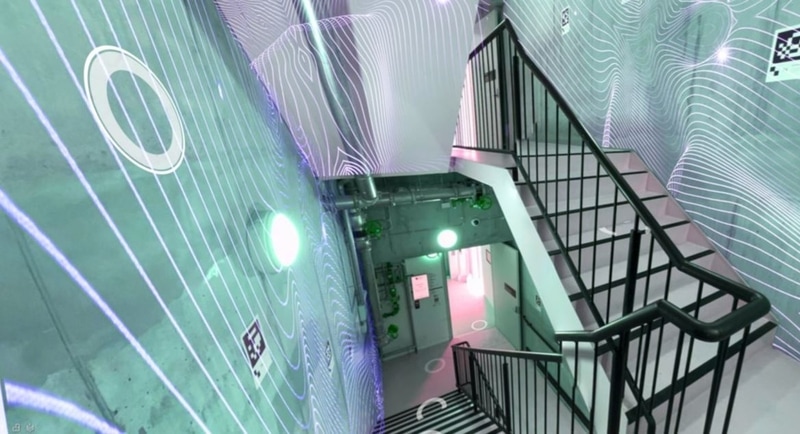
REDIRECTION THROUGH ACTIVATION
Redirection through Activation uses projection and ambient sounds, each of which respond to any lack of nearby activity in the building, to bring under-utilised and unwelcoming Arts Centre spaces to life. This system encourages visitors to venture into unfamiliar and unoccupied areas, which helps keep the whole building active and reduces foot traffic in heavily used areas during busier periods.
